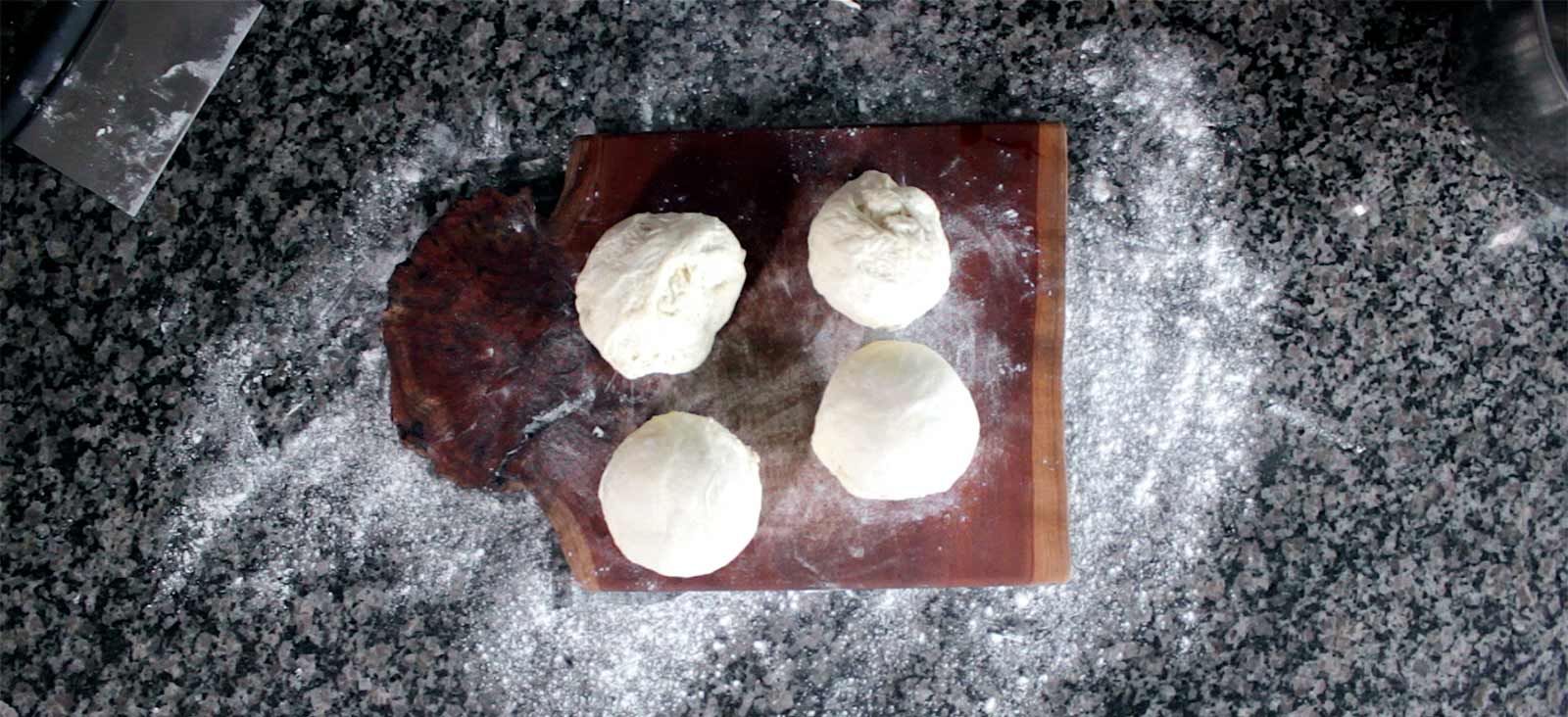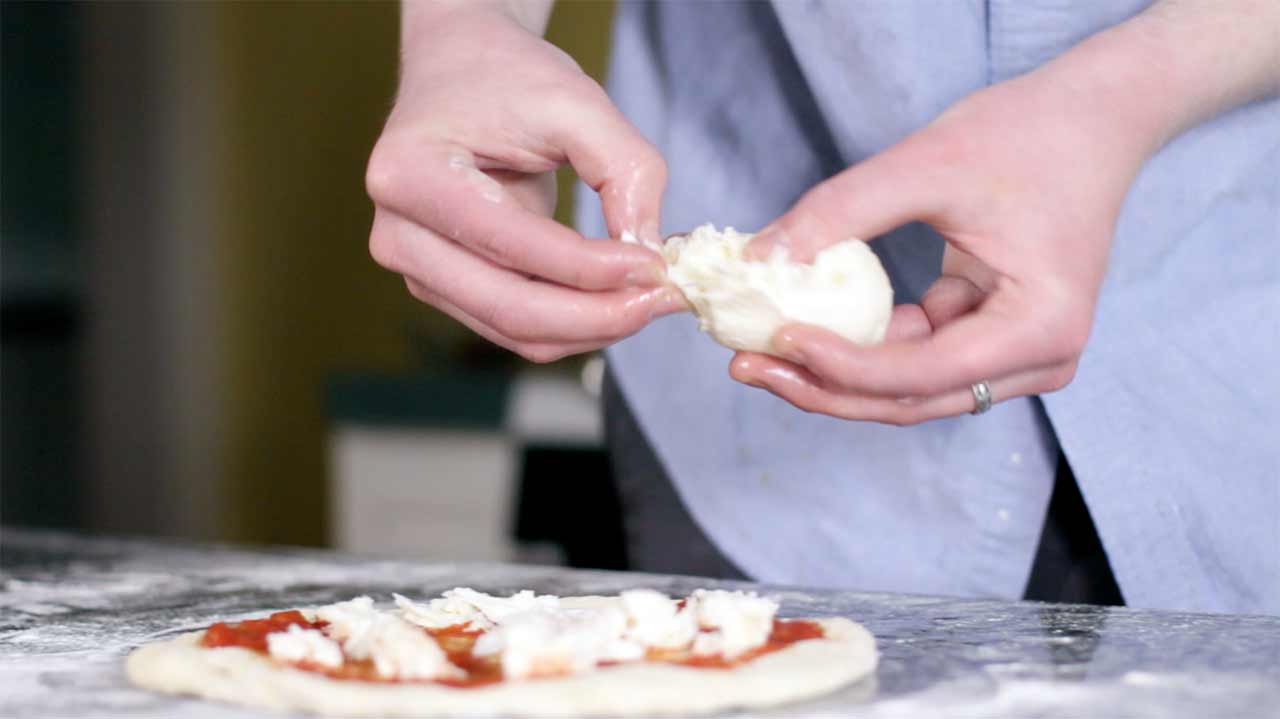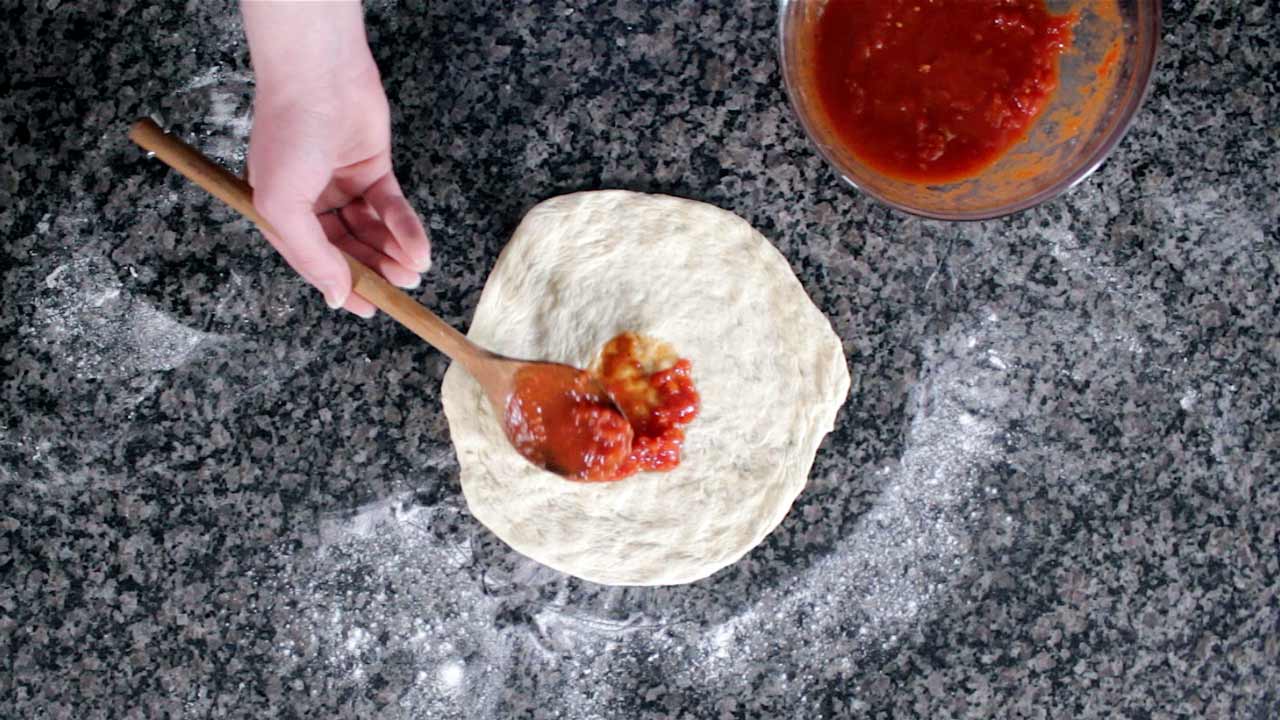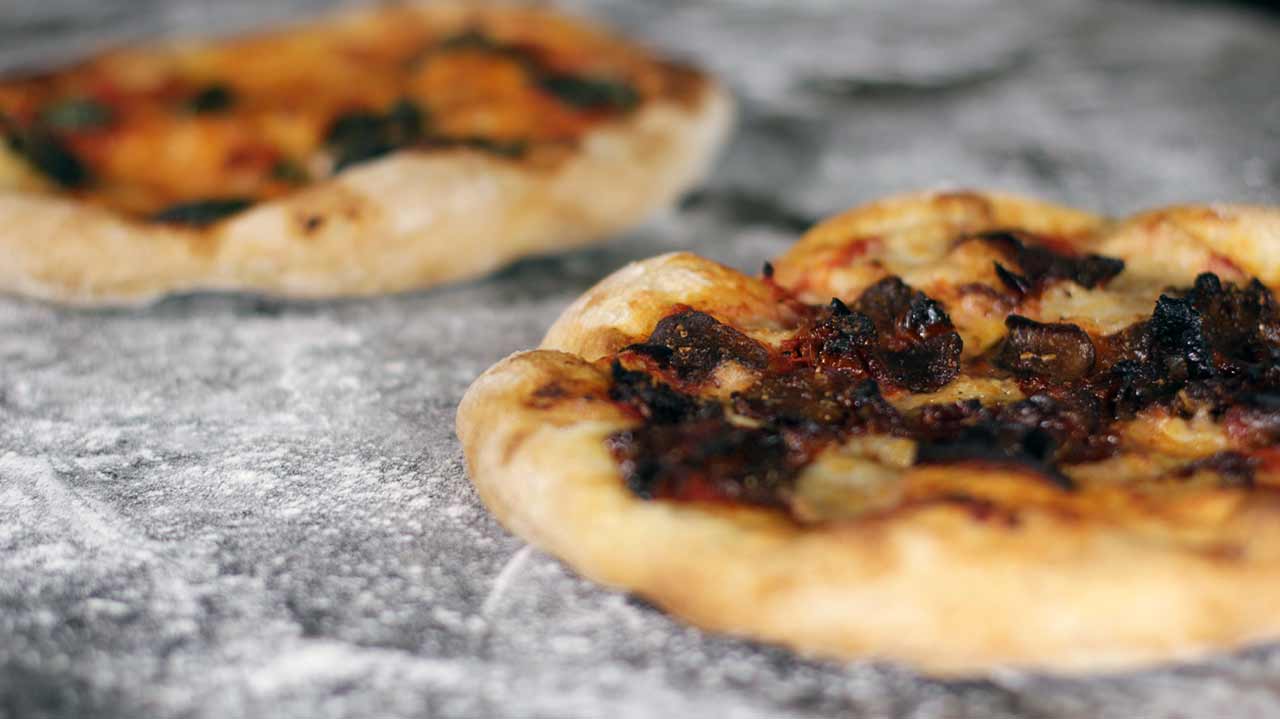Perfect Pizza
Beautiful layers of complex flavor without the meat – just simple, elegant, and vegetal deliciousness.
Beautiful layers of complex flavor without the meat – just simple, elegant, and vegetal deliciousness.
There are some dishes that belong to a collection I like to call “the perfect foods.” The dumpling, the taco, the sandwich, the falafel. However, one food endures in my heart, the food of a thousand faces, a food that can shape-shift from cheap dinner to fancy fare and still retain its iconic set of flavors. There are signature local variations and regional rivalries. It’s definitely American, yet certainly Italian. I’m talking, of course, about pizza. A food so transcendent that even bad pizza is good. Of course, you, my nerdy friend, don’t want to make bad pizza. You want to make excellent pizza. You want pizza precision. You just happen to want those beautiful layers of complex flavor without the meat.
This would seem to be a simple enough request, but the supermarket’s vegetarian and vegan topping options have so often been unsatisfying. But I have come to tell you there is a better way to make pizza, one with simple, elegant, and vegetal deliciousness. So let’s dive into the anatomy of a great pizza.
Pizza stands or falls by way of its crust. These days, there are a few stores that carry decent pizza dough in their refrigerated section, already ready to go. However, if you want to guarantee the best flavor and texture, which I’m sure you do, the best route is to make your own dough.

Luckily enough, I’ve done a deep dive into the best pizza dough (which is, funny enough, the simplest). We’ll talk about ratios, yeast, the science of wheat flour, and lots of other fun stuff.
My favorite pizzas are ones that focus on a small number of simple and delicious ingredients. For me, this means that most commercial vegan cheeses will not come near my pie. In a desire to recreate the comfort of their childhood, many vegans with no malicious intent will coat their pizza with this stuff in hopes that it’ll serve their nostalgia well. Unfortunately, the texture and flavor land in an uncanny valley of almost being like their animal analogues, but deeply and undeniably deficient.

There are certainly some vegan store bought options (like Miyoko’s Creamery fresh vegan mozzarella) as well as some homemade recipes (don’t worry, we’re at work researching) that can deliver some tasty cheese results. However, if neither of these options are available to you, my best recommendation is to make cheeseless pizza. Now, this may seem heretical. But one of the two basic Neapolitan pizzas, the Marinara, uses no cheese at all: tomatoes, garlic, oregano, and olive oil are enough to make a stunning pie that’s been made for more than a century. Believe me, once you taste that pizza, your thought will not be “I sure wish this pizza had cheese.”
What about the sauce? I’ve made a whole lot of pizza in my life and I’ve sauced it with a lot of crappy sauces, most of which tasted like they were intended for spaghetti and meatballs. While you could use pasta sauce on a pizza, it really is overkill. The big note we want from our sauce is tomato, bright and fresh and a bit acidic.

For that, I simply hand crush canned whole plum tomatoes with a gentle dose of salt and pepper. That’s it. No cooking required. No stewing your sauce for hours and hours. No crazy herbs, no distracting aromatics. Just simple, delicious tomato flavor. Pizza already has so many flavors in the mix here that we don’t need our sauce to be complicated. Besides, it just leaves you more time to make the other stuff.
A pizza with a delicious crust and quality ingredients doesn’t need to be topped extravagantly. Most of the time, I think of toppings simply as a seasoning for everything underneath rather than a main course. Of course, I do crave a heavy pizza every now and again, and if that’s what you’re after, you should follow that dream. However, most of the time, I want pizza that is simply and thoughtfully topped in combinations that make sense. Here are some basic axioms of pizza toppings to guide your flavor decisions:
Pick bold and distinct flavors. Most raw veggies end up with bland flavor and odd, sometimes slimy texture on your pizza. A little bit of TLC will get most ingredients to the flavor bursts we want them to be: a roasted pepper or a caramelized onion, for instance, or our pepperoni mushrooms. Fermentation and pickling also go a long way, such as in the case of pepperoncini.
Top with bite-sized chunks. Artichoke heart quarters? Cut them to more manageable pieces. Asparagus? One-inch lengths, or even shave them. Sun-dried tomatoes? You get the idea. The last thing you want to do is take a bite into the topping and pull half of the rest of the pizza with it. Think about what each topping will add to the pie you’re creating. Will it add a distinct note of flavor without overpowering the rest of the pizza?

Bearing these axioms in mind, my all-time favorite toppings (in no particular order) are:
Basil
Sun-dried tomato
Garlic
Mushroom pepperoni
Pepperoncini
Artichoke hearts
Why do I always return to pizza? Why has it been my cooking obsession since the age of twelve? I would say that the magic of pizza lies in its simple and malleable form, as well as the fact that nearly everyone who grew up in America has some sort of nostalgia for this food. Combine that nostalgia with obsession and a little bit of Internet, and I think I have my answer.

I hope we have provided you ample resources to power your own pizza passion. And of course, pizza is the perfect arena to display the versatility and the deliciousness of food made of plants. The world is your pizza, veggie nerds.